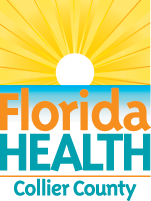It's a New Day in Public Health.
The Florida Department of Health works to protect, promote, and improve the health of all people in Florida through integrated state, county, and community efforts.
Wound Care and Preventing Wound Infections In Disaster Events
September 18, 2017

Naples, Fla.— After a flood, wound care and preventing infections is often a concern. The risk of wound infection following a flood is raised because of interruptions in the clean water supply, electricity and normal hygiene practices. Citizens and responders working in and around debris and flood waters may have an increased risk for wounds and infections.
Individuals using equipment that they are unfamiliar with combined with the exertion and fatigue during cleanup activities may also lead to an increase in wounds and injuries. During post-storm cleaning and recovery activities it is important to wear appropriate protective equipment, such as gloves, work clothes, eye protection, and heavy shoes or boots, to prevent injuries.
Individuals receiving a wound should follow three simple guidelines:
- Clean the wound. A thorough cleansing of the wound with soap and safe water reduces the potential for infection.
- Apply a bandage to the wound. Keeping the wound dry and protected will reduce the chance of infection and prevent transmission of infection to others.
- Consult a health care provider. If the wound becomes, red, warm to the touch, or there is pus or debris in the wound, consult a healthcare provider.
Remember, it is important to keep wounds clean, covered and dry to help prevent infection, and to seek medical care for infected wounds.
Some organisms that cause infections are resistant to a variety of antibiotics. Not properly caring for these infections can have serious consequences. It is important to understand that a type of infection called MRSA is no more prevalent after a storm or natural disaster than it was prior to the event. Any infected wounds that are not healing properly require prompt medical attention.
Finally, tetanus may be a concern. Tetanus is more of a risk during cleanup activities because of increased exposure to debris and floodwaters. Not every person needs a tetanus vaccination after a flood. A tetanus vaccination may be offered if:
- The individual has a clean, minor wound and it has been 10 years since their last tetanus vaccination.
- The individual has a wound contaminated with dirt (including dirty flood waters), feces, soil, saliva; a puncture wound; an avulsion (skin is torn away); and wounds resulting from missiles, crushing and burns; and it has been five years since the last tetanus vaccination.
For more information, please visit https://www.cdc.gov/disasters/woundcare.aspcontact your local county health department, visit www.floridahealth.gov, or www.floridadisaster.org.
About the Florida Department of Health
The department, nationally accredited by the Public Health Accreditation Board, works to protect, promote and improve the health of all people in Florida through integrated state, county and community efforts.
Follow us on Twitter at @HealthyFla and on Facebook. For more information about the Florida Department of Health please visit www.FloridaHealth.gov.





Connect with DOH